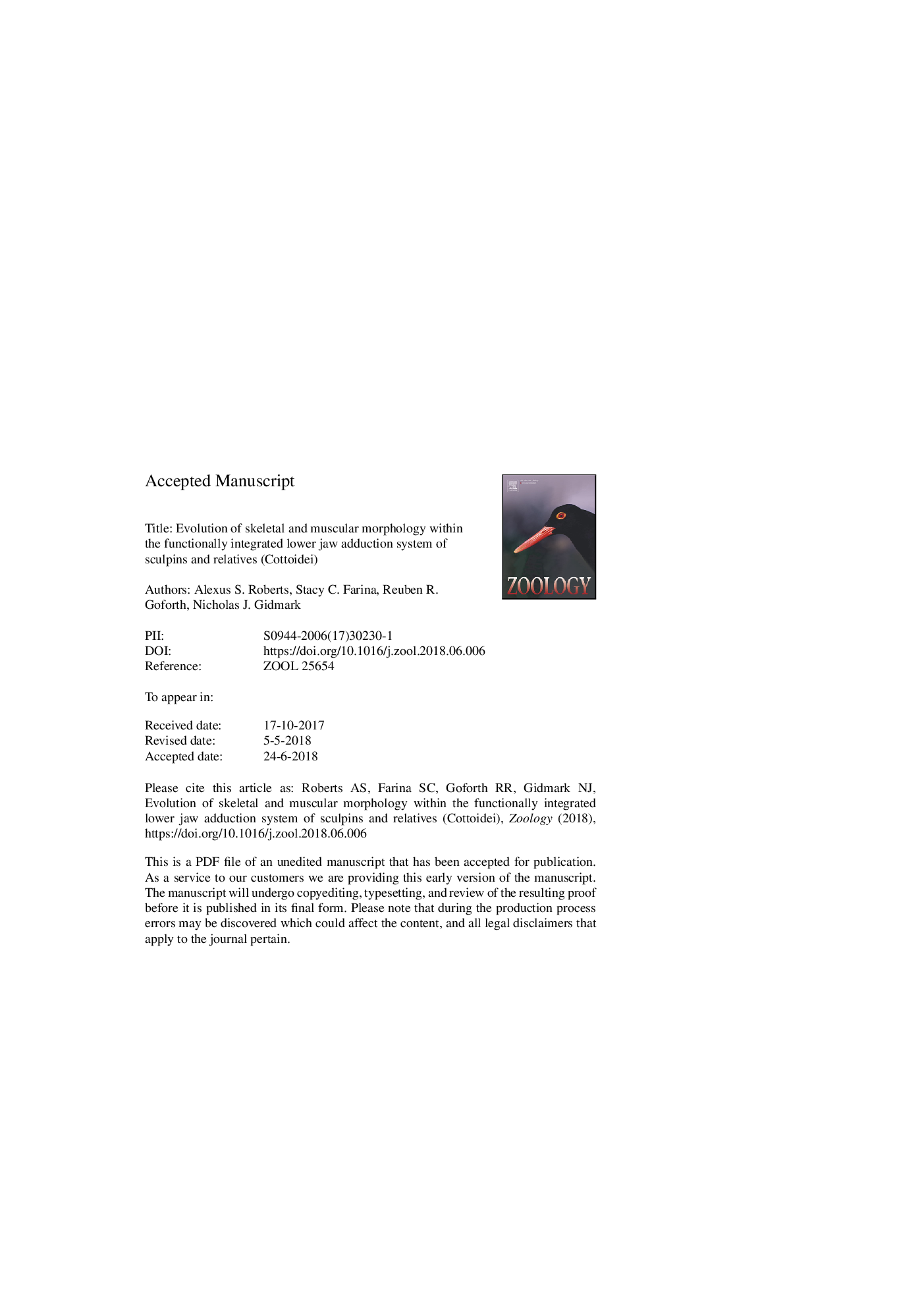| Article ID | Journal | Published Year | Pages | File Type |
|---|---|---|---|---|
| 8626937 | Zoology | 2018 | 28 Pages |
Abstract
Vertebrate lever mechanics are defined by the morphology of skeletal elements and the properties of their muscular actuators; these metrics characterize functional diversity. The components of lever systems work in coordination (“functional integration”) and may show strong covariation across evolutionary history (“evolutionary integration”), both of which have been hypothesized to constrain phenotypic diversity. We quantified evolutionary integration in a functionally integrated system - the lower jaw of sculpins and relatives (Actinopterygii: Cottoidei). Sculpins primarily rely on suction feeding for prey capture, but there is considerable variation in evasiveness of their prey, resulting in variation in anatomy of the lower jaw-closing mechanism. We used functionally-relevant linear measurements to characterize skeletal and muscular components of this system among 25 cottoid species and two outgroup Hexagrammoidei (greenling) species. We quantified evolutionary covariation and correlation of jaw-closing mechanical advantage (i.e., skeletal leverage) and muscle architecture (i.e., gearing) by correlating phylogenetically independent contrasts and fitting phylogenetically corrected generalized least squares models. We found no evidence of evolutionary covariation in muscle architecture and skeletal leverage. While we found a positive evolutionary correlation between out-lever length and adductor muscle fiber length, there was no significant evolutionary correlation between in-lever length and adductor muscle fiber length. We also found a positive evolutionary correlation between in- and out-lever lengths. These results suggest that skeletal morphology and muscle morphology contribute independently to biomechanical diversity among closely related species, indicating the importance of considering both skeletal and muscular variation in studies of ecomorphological diversification.
Keywords
Related Topics
Life Sciences
Agricultural and Biological Sciences
Animal Science and Zoology
Authors
Alexus S. Roberts, Stacy C. Farina, Reuben R. Goforth, Nicholas J. Gidmark,
